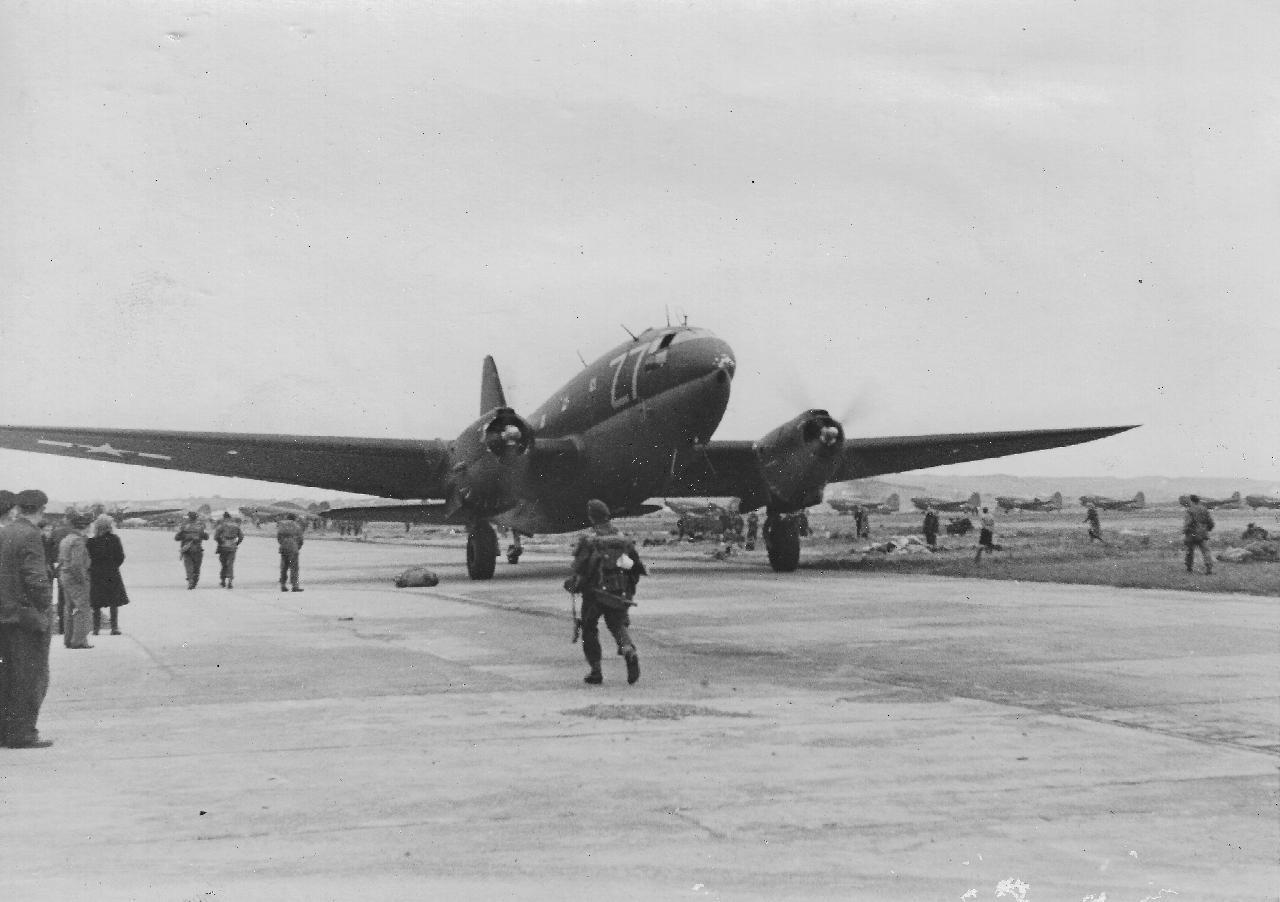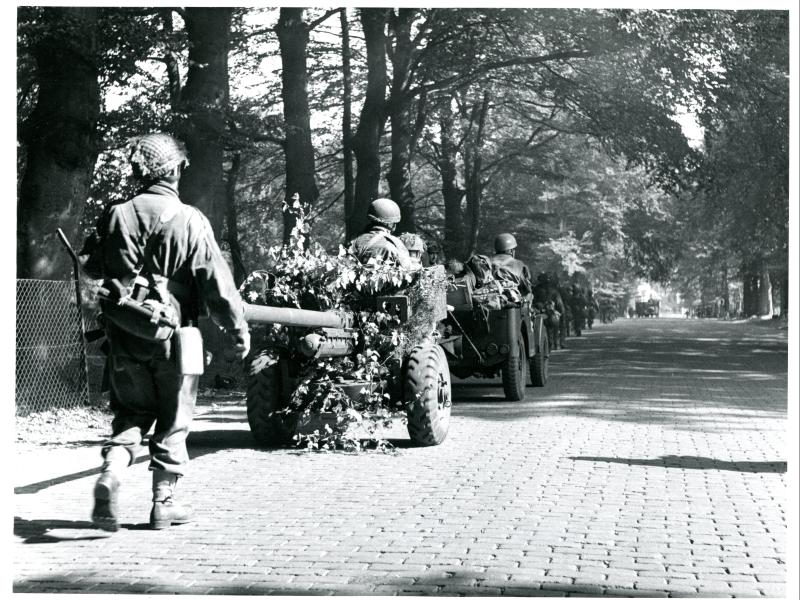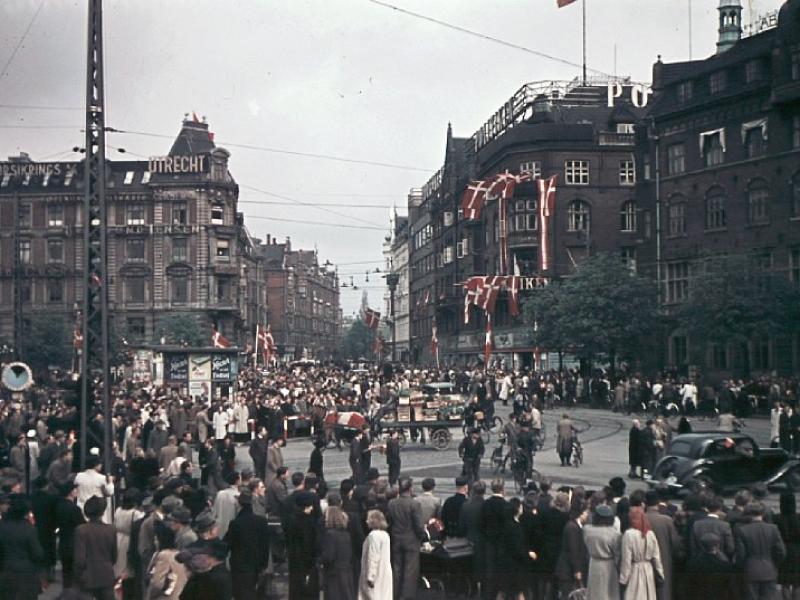Operation DOOMSDAY
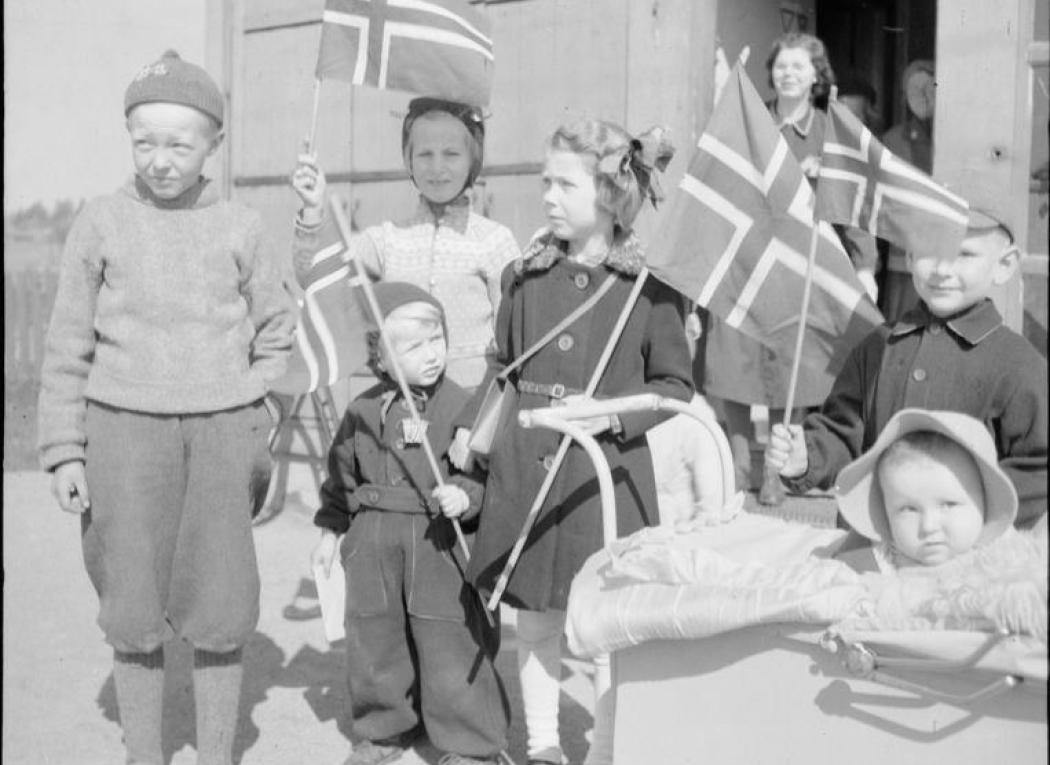
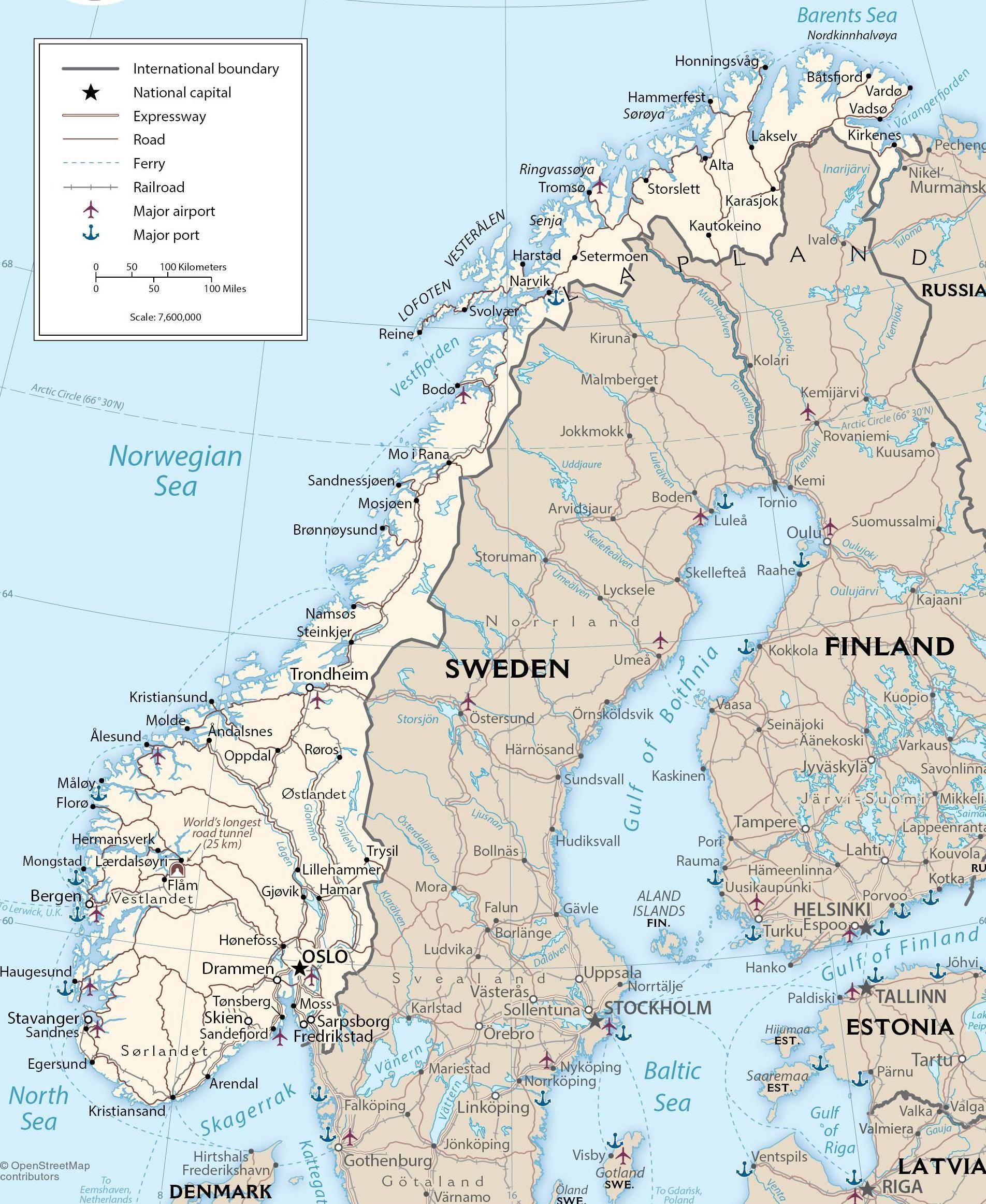
Norway and its neighbours. (Public domain, via https://www.cia.gov/resources/map/norway/)
OVERVIEW
In late 1944/early 1945, plans were drawn up for an Allied operational and reconstruction force to be sent to Norway if the Germans surrendered unconditionally, and all organized resistance in Europe ceased. The force would be known as Force 134 and the operation was given the name APOSTLE. Force 134 would be commanded by Headquarters Scottish Command and would deploy to Norway by sea and by air; the overall operation was called APOSTLE, and the air-transported part was called Operation DOOMSDAY.
Force 134 would comprise elements from all three Services. The ground elements would be drawn from three nations: Norwegian troops who had been training in Scotland, US troops, and a British element including the 52nd (Lowland) Infantry Division. In May 1945, when Force 134 needed to deploy to Norway, the 52nd Division was busy on operations in Germany, and the British 1st Airborne Division was selected to replace it.
BRITISH 1ST AIRBORNE DIVISION

Major General R E Urquhart, General Officer Commanding, 1st Airborne Division. (IWM H 40947)
After the battle at Arnhem in September 1944, Major General R E ‘Roy’ Urquhart had remained in command of the 1st Airborne Division, and he had a very difficult task before him: to rebuild the Division, which had suffered grievous losses during the battle, and return it to combat-ready status.
In November 1944, the 4th Parachute Brigade of the 1st Airborne Division ceased to exist when its few survivors were amalgamated into the 1st Parachute Brigade1; its place was taken by the 1st Polish Independent Parachute Brigade2.
By May 1945, many young and inexperienced men had joined the Division as replacements, and the Division needed to be tested to ensure it was fit for another operation. The test would take the form of Exercise AMBER, which began in Suffolk on 3 May. However, the exercise began closing down within 24 hours of starting because orders had come through for two Brigades to return to base: the Polish Brigade, which was to prepare for a move to Germany on occupation duties, and the 1st Parachute Brigade, which was to prepare to fly units into Denmark on Operation ECLIPSE to maintain order (its first troops flew from Barkston Heath airfield to Copenhagen on 6 May 3.
On 5 May, the remainder of the Division was warned that it would be flown at short notice to Norway. Major General Urquhart, accompanied by some of his staff officers, caught the night train to Edinburgh and spent the next day at Headquarters Scottish Command discussing the operation. By 9 May, the Division was ready to deploy.
To compensate for the loss of the 1st Parachute Brigade, the Special Air Service (SAS) Brigade was quickly flown back from operations in Germany and placed under the command of the 1st Airborne Division.
The tasks of the 1st Airborne Division were:
- To maintain law and order.
- To prevent sabotage of the most important civil and military installations, dumps and communications.
- To maintain the security of operational airfields.
- To ensure observance of the surrender terms by the German forces. 4
This was potentially a dangerous assignment as 6,000 airborne troops were being called upon to disarm and control 350,000 German soldiers. 5
- 1
Headquarters 1st Airborne Division (A/Q Branch), War Diary, October 1944 (The National Archives, WO 171/395).
- 2
Terence B H Otway, Airborne Forces of the Second World War, 1939-45, Facsimile of War Office publication of 1951 (Uckfield, 2019), 324–329.
- 3
Terence B H Otway, Airborne Forces of the Second World War, 1939-45, Facsimile of War Office publication of 1951 (Uckfield, 2019), 324–329.
- 4
Terence B H Otway, Airborne Forces of the Second World War, 1939-45, Facsimile of War Office publication of 1951 (Uckfield, 2019), 324–329.
- 5
Paradata, ‘Norway (Operation Doomsday)’, Www.paradata.org.uk <https://www.paradata.org.uk/event/norway-operation-doomsday> [accessed 2024].
PLANNING
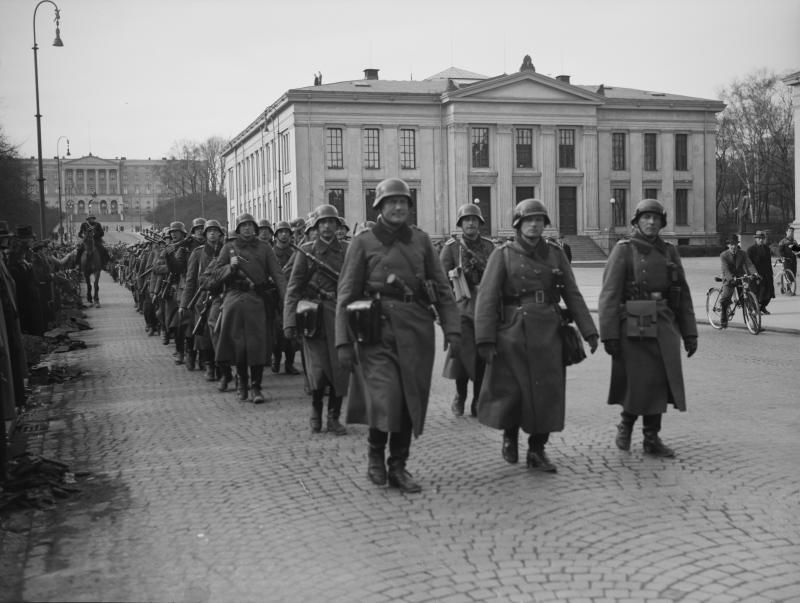
Victorious German troops march through Oslo in May 1940 - but would they be prepared to fight the Allies in 1945?
(Henriksen & Steen [Photographers in Oslo, Norway] / National Library of Norway, CC BY-SA 4.0 <https://creativecommons.org/licenses/by-sa/4.0>, via Wikimedia Commons)
Planners were under serious time pressure because the operation needed to be launched quickly and only four days passed between 1st Airborne receiving its orders and its advanced parties taking off for Norway. Planning was also affected by a lack of certainty about the Germans’ willingness to obey the orders from their High Command to surrender. No one knew the answer to the question: would the Germans fight or not? After careful thought, it was assessed that the Germans would comply with the surrender terms and would not present any armed resistance – and this fortunately proved to be the case.
Owing to the short time available and lack of certainty about the enemy’s intentions, the plan was kept simple. The Division was organized into three Brigades: the 1st Airlanding Brigade, the SAS Brigade, and an Artillery Brigade, composed primarily of troops belonging to the Division’s artillery units and their support units. The Artillery Brigade did not need to take its artillery pieces because it would be carrying out general peace-keeping duties like the other two Brigades.
Operation APOSTLE was originally planned to take place before Operation DOOMSDAY. In the time before the airborne elements arrived, base installations were to have been laid out and stocked with one month’s supplies. However, as the 1st Airborne Division would now arrive by air some three weeks before the seaborne troops of APOSTLE, it would have to set up and supply the bases from within its own resources. 6
- 6
1st Airborne Division, Report of the Move of the 1st Airborne Division and Attached Troops to Liberate Norway and Subsequent Action up to 1 June 1945, 1945.
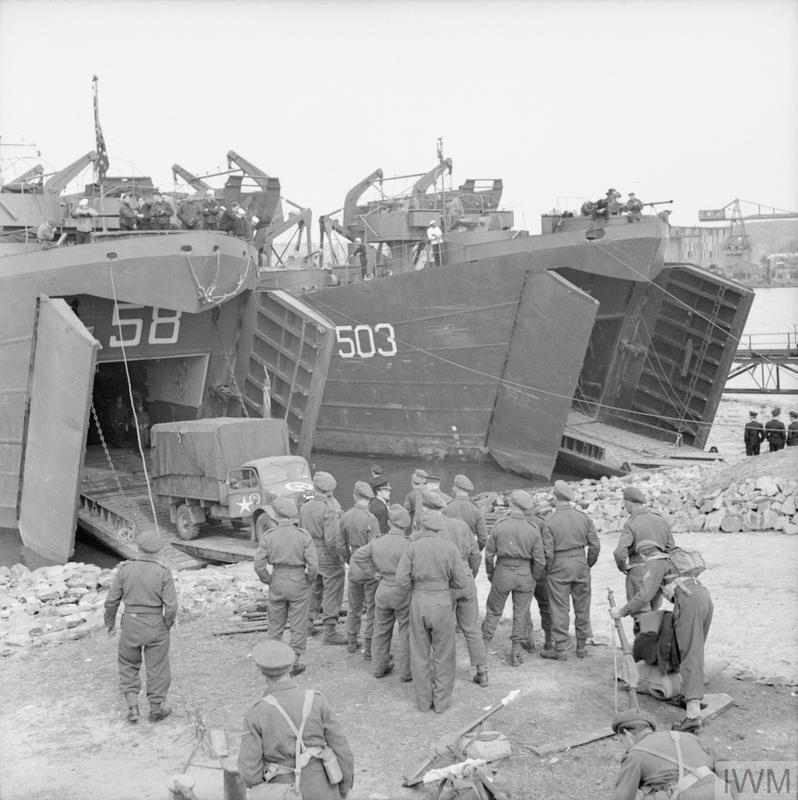
Operation APOSTLE: British troops watching lorries being loaded aboard a US landing ship in the port of Hamburg ready for embarkation to Norway. (IWM BU 7048)
Vehicles transported in the airlifts would be limited by size and weight, so they would primarily be jeeps and motorcycles. The seaborne lifts would bring in larger vehicles, but units would have to exercise initiative to source vehicles locally in the meantime.
The three Brigades would each be responsible for a specific lodgement area 7:
1st Airlanding Brigade: allocated Oslo, which was the centre of both the German and Norwegian administrations.
Artillery Brigade: allocated Stavanger, one of the nearest towns to the UK with a good harbour and a good airfield that was suitable for fighter operations.
SAS Brigade: allocated Kristiansand, which the Royal Navy wanted to use as a base for minesweepers clearing the Skaggerak.
The move by air of the 1st Airborne Division to Norway was carried out by British and American transport aircraft. Stirling and Halifax aircraft of No 38 Group RAF flew from Earls Colne, Great Dunmow, Rivenhall and Shepherd’s Grove airfields in East Anglia, and Tarrant Rushton in Dorset. C-46 aircraft of the US 313th and 349th Troop Carrier Groups were detached from their bases in France to Barkston Heath and Saltby airfields in Lincolnshire. All flights would land at either Gardermoen airfield (30 miles from Oslo) or Stavanger Sola airfield.
- 7
Terence B H Otway, Airborne Forces of the Second World War, 1939-45, Facsimile of War Office publication of 1951 (Uckfield, 2019), 324–29.
INTO ACTION
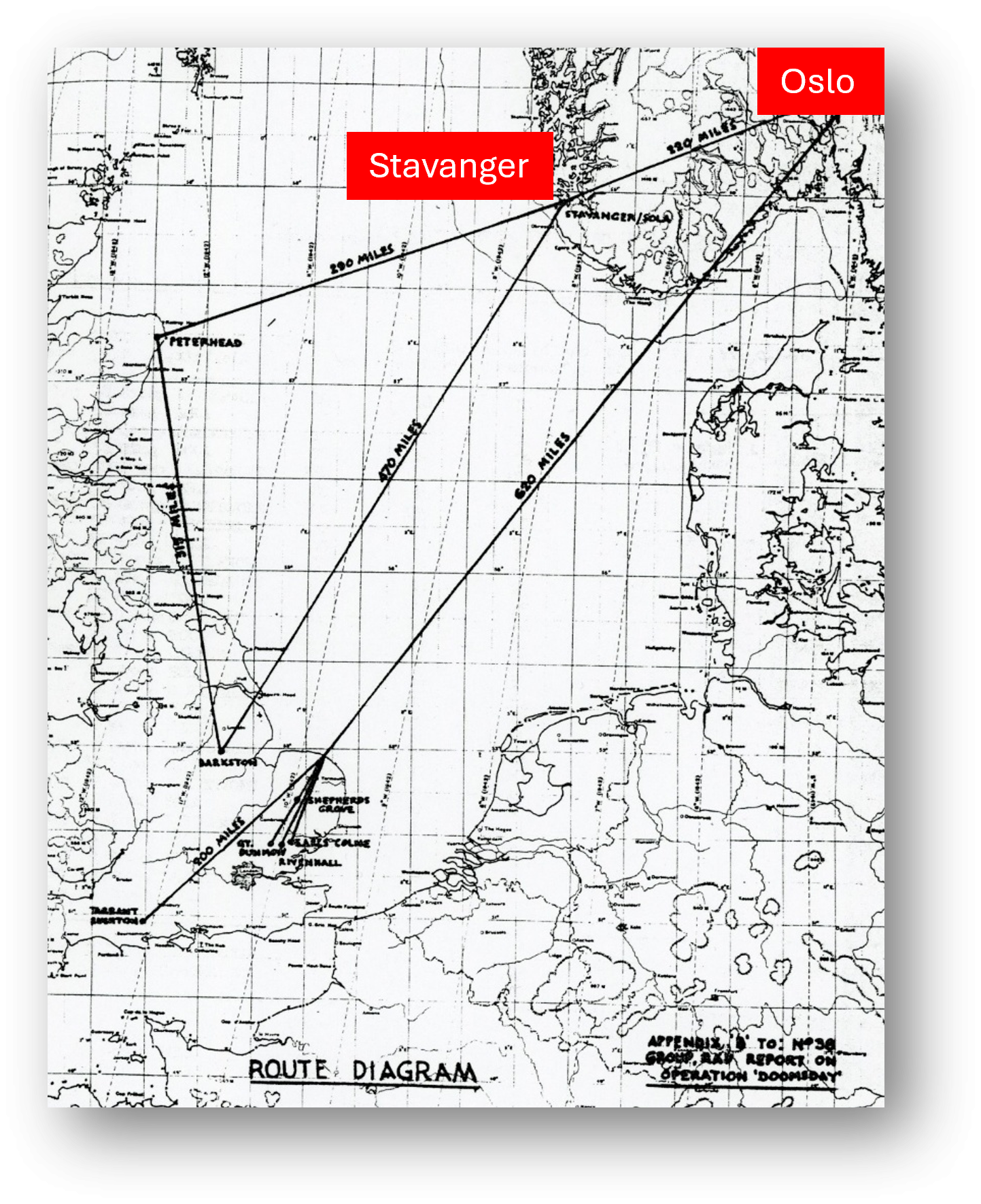
The planned air routes to Stavanger and Oslo. (Via Bill Taylor)
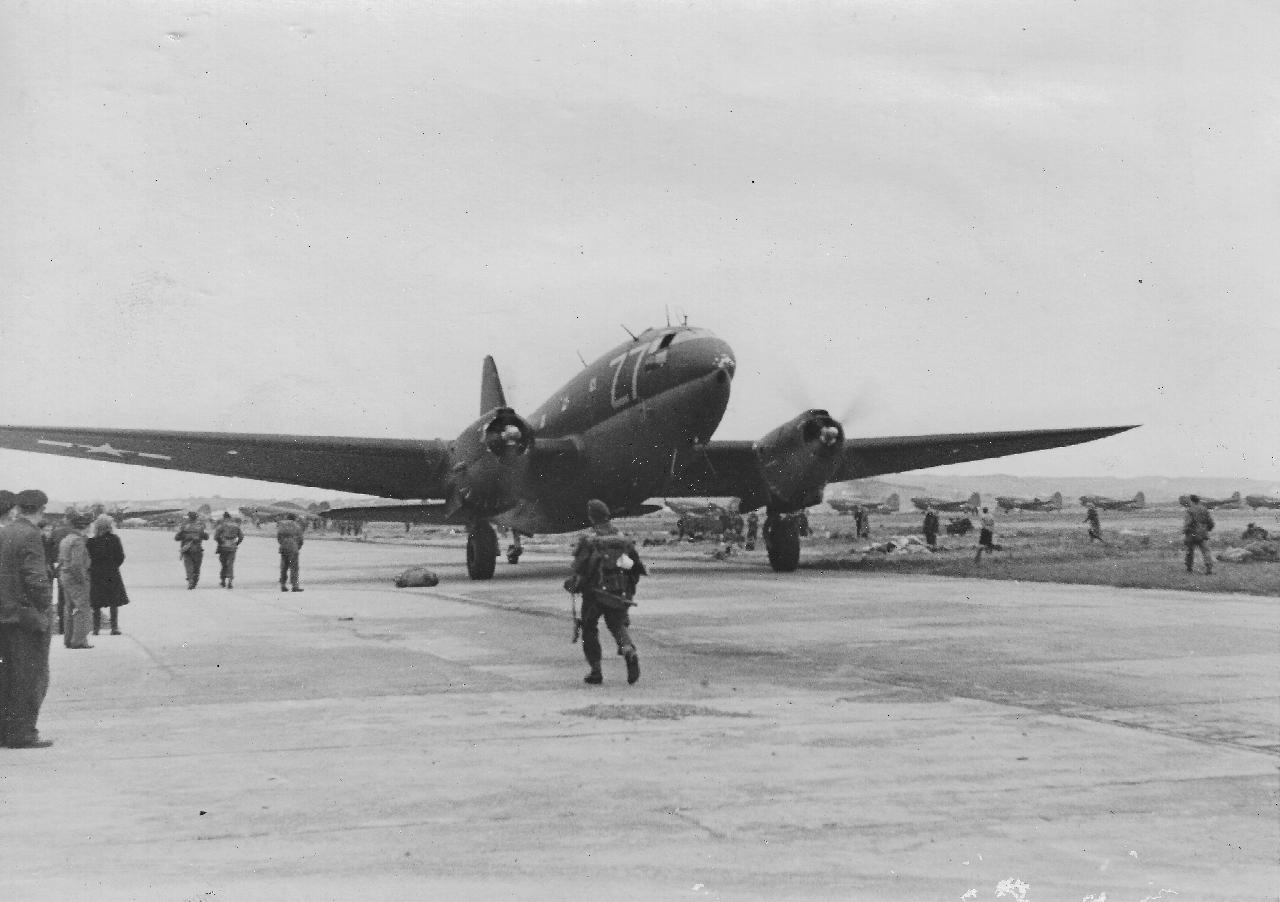
9 May 1945: a C-46 of the 313th Troop Carrier Group arrives at Stavanger Sola airfield. Norwegian civilians watch as 1st Airborne troops disembark and unload equipment. (Via Richard Chancellor)
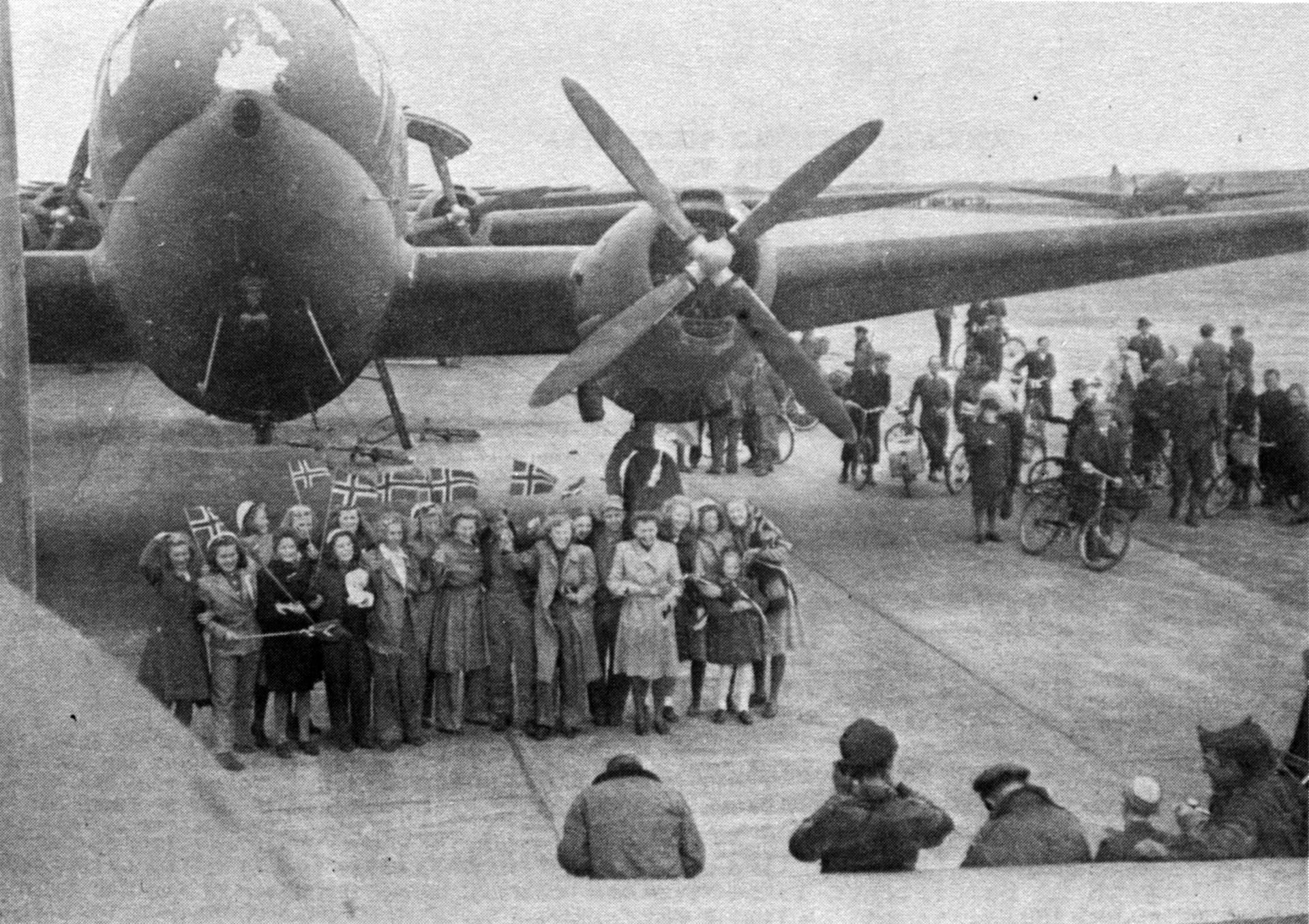
American airmen take photos of jubilant Norwegian civilians alongside a C-46 aircraft of the 313th Troop Carrier Group at Stavanger airfield. (Via Richard Chancellor)
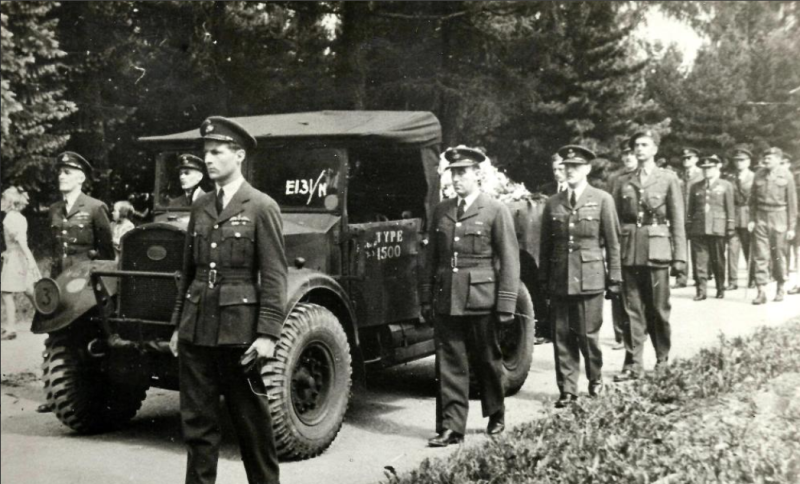
Mass funeral of the victims from the crash of Short Stirling LK 297 on Andtjernåsen peak, near Oslo. (Paradata/Airborne Assault Museum)
Rumours of capitulation are in the air. At 12 pm it was reported in a Danish broadcast, at 3 pm a Norwegian broadcast said that Terboven has not officially capitulated, and that Böhm the Commander-in-Chief in Norway had asked to capitulate unconditionally. 8
Diary of a Narvik housewife, Greta Dahl, 6 May 1945
Advance Parties were flown out successfully on 9 May. On 10 May – the first day of the main airlift - the weather over Norway deteriorated and caused major problems. The American C-46 aircraft flying to Stavanger Sola airfield landed safely but all RAF aircraft flying to Gardermoen were recalled. Most returned to their UK home bases but others diverted to airfields in the UK, Norway or the Continent, and three crashed, resulting in over 40 fatalities. The most senior of these fatalities was Air Vice-Marshal James Scarlett-Streatfield, the commander of No 38 Group, RAF. 9
As a late attachment, the Special Air Service Brigade had not been included in the initial air plan, so its move to Norway from Germany was very complicated. The Brigade had been operating in jeeps behind enemy lines in the Netherlands and Germany, and it first had to be transported by sea to the UK, from where it would be flown to Norway. As it happened, the SAS troops had to be ferried over as and when transport and aircraft became available. Between 12-23 May, a total of 83 officers and 679 other ranks of the SAS were flown to Norway. 10
- 8
Narvik Krigsmuseum/Narvik War Museum, ‘Liberated! A Digital Exhibition by Narvik War Museum’, Narvik Krigsmuseum, 2023 <https://warmuseum.no/exhibition/liberated/#1> [accessed 8 January 2025].
- 9
Malcolm B Barrass, ‘J R Scarlett-Streatfield_P’, Rafweb.org, 2024 <https://www.rafweb.org/Biographies/Scarlett-Streatfield.htm> [accessed 24 December 2024].
- 10
1st Airborne Division, Report of the Move of the 1st Airborne Division and Attached Troops to Liberate Norway and Subsequent Action up to 1 June 1945, 1945.
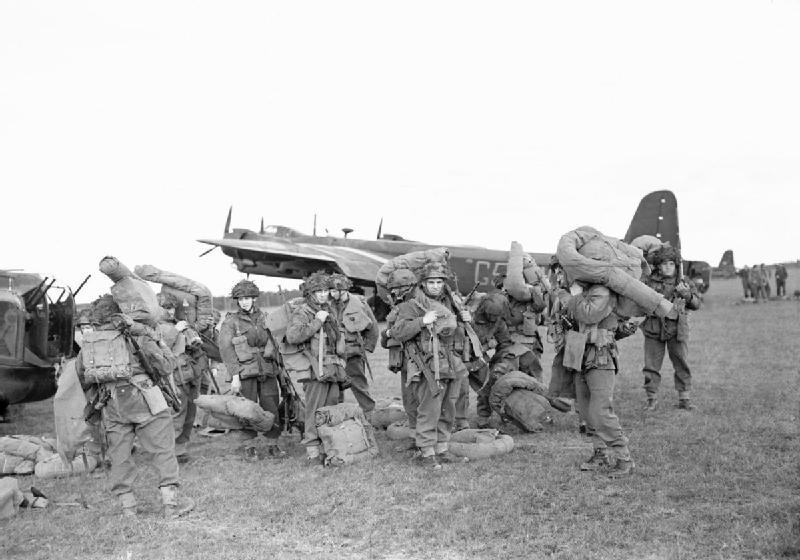
British First Airborne Troops land in Norway
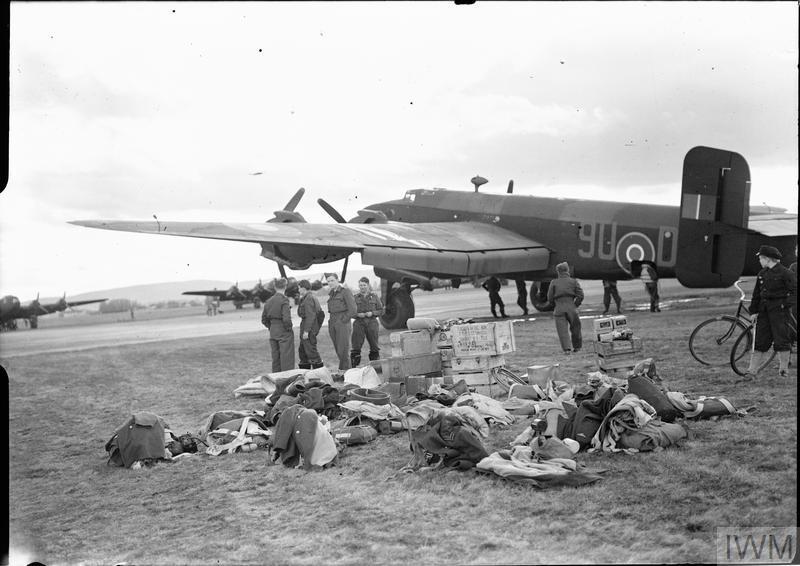
British airborne forces land in Oslo
ON THE GROUND
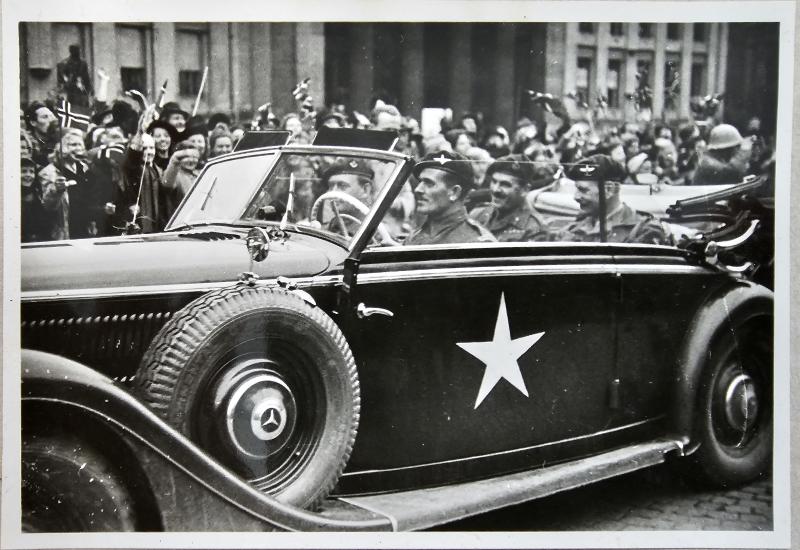
Major General Urquhart in a commandeered German staff car enjoys the warm welcome of the Norwegian crowds. (Paradata/Airborne Assault Museum)
The original plan had called for a triumphal march by men of the 1st Airborne Division into Oslo on 10 May 1945. Owing to the bad weather, the number of aircraft able to land at Gardermoen on 10 May had been drastically reduced, so the actual ‘triumphal march’ consisted of two parties, each around 30 men of the 2nd Battalion, South Staffordshire Regiment, with Major General Urquhart’s car and four military police motorcycles between them. These small parties were nervous about a possible adverse German reaction, but the Germans behaved well and there were no incidents. Instead, the British received an ecstatic welcome from the Norwegians.
Major General Urquhart was effectively in charge of affairs in Norway for the first few days until the arrival of Headquarters, Allied Land Forces, Norway. During this period, he welcomed Crown Prince Olav and five government ministers when they returned to Norway on 13 May. 11 The Division also took part in the ceremonies welcoming King Haakon and Crown Princess Märtha and her children when they returned on 7 June, five years to the day after the King and Crown Prince had been forced to leave the country. 12
- 11
The Royal House of Norway, ‘World War II’, The Royal House of Norway, 2007 <https://www.royalcourt.no/artikkel.html?tid=28689&sek=27316> [accessed 24 December 2024].
- 12
Ibid.

Oslo, 13 May 1945: Major General Urquhart (left) welcomes HRH Crown Prince Olav and five government ministers on their return to Norway. (Paradata/Airborne Assault Museum)
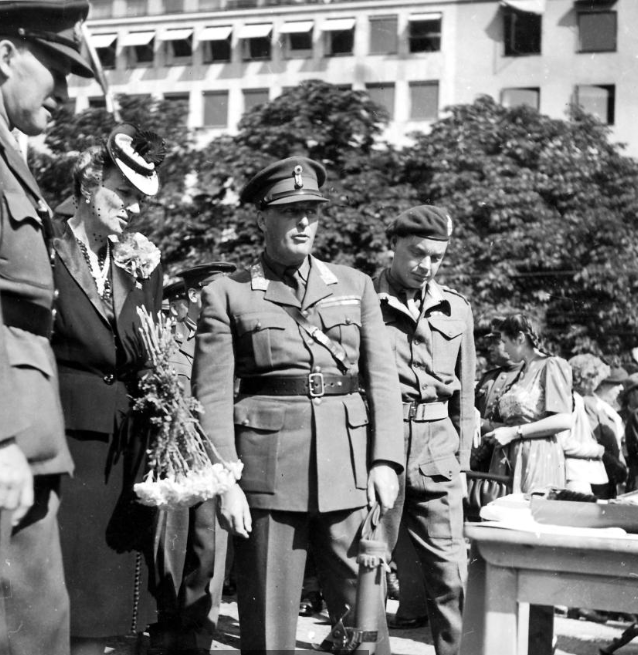
7 June 1945: Crown Prince Olav and Crown Princess Märtha during the ceremony to welcome King Haakon back from exile. (Paradata/Airborne Assault Museum)
Grandfather [King Haakon VII] was anxious and wondered what the homecoming would be like. How would the people receive him? His refusal to accept German demands in 1940 had led to a great many Norwegians deaths during the war. He was deeply moved by the warm welcome of all the people. 13
Princess Astrid of Norway, Mrs Ferner [aged 13 when she returned to Norway in 1945]
In addition to their primary tasks, the 1st Airborne troops segregated German troops in secured areas, rounded up war criminals, gave assistance to liberated prisoners-of-war from the Soviet Union and other Allied nations, and organized German troops into parties to clear minefields and buildings under Royal Engineer supervision. 14
The German troops were living in considerable comfort, their morale of was still high and they did not regard themselves as a beaten force. They generally conducted themselves in an orderly manner under the control of their own officers and there were no serious cases of disobedience. They collected themselves into their camps, disarmed themselves, fed themselves and arranged their evacuation to Germany. 15
- 13
The Royal House of Norway, ‘Homecoming, 7 June 1945’, Www.royalcourt.no, 2020 <https://www.royalcourt.no/nyhet.html?tid=183735&sek=27262> [accessed 8 January 2025].
- 14
Terence B H Otway, Airborne Forces of the Second World War, 1939-45, Facsimile of War Office publication of 1951 (Uckfield, 2019), 324–329.
- 15
Ibid.
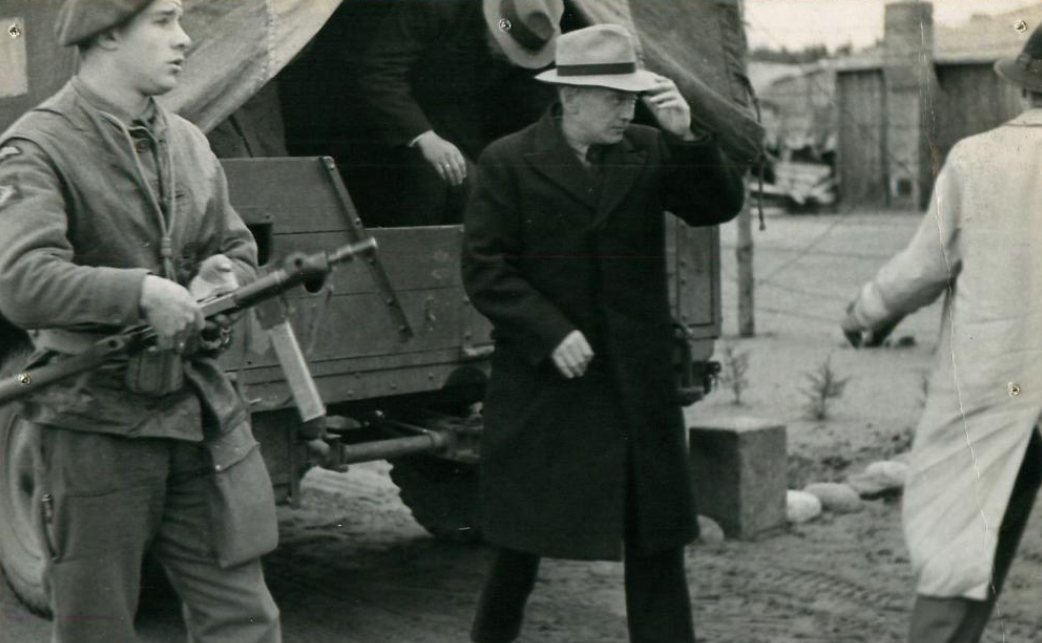
A paratrooper watches over arrested men of the German 'Gestapo', the brutal secret state police . (Paradata/Airborne Assault Museum)
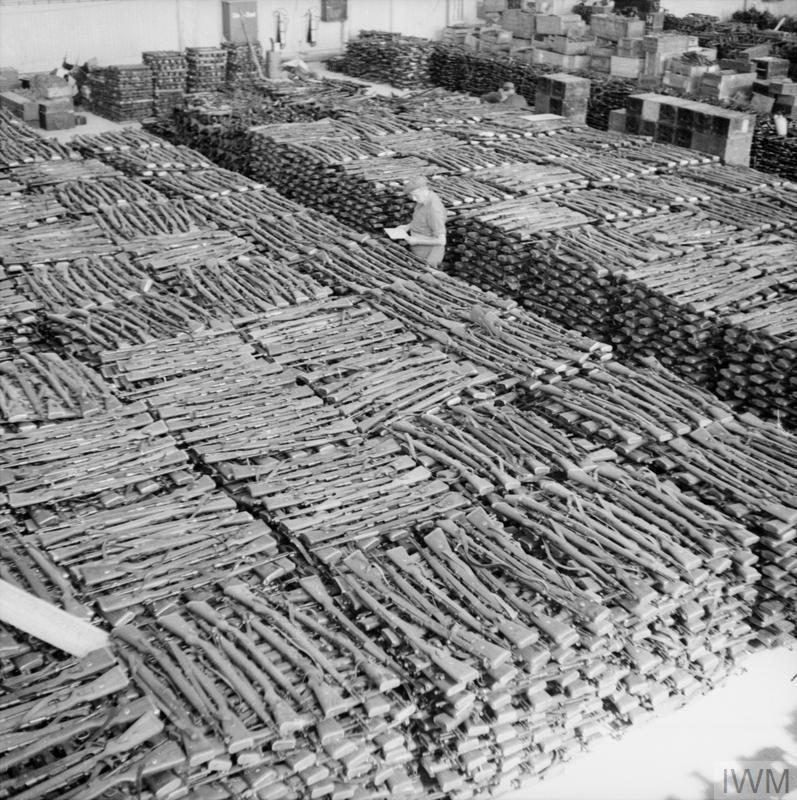
Storeroom at Stavanger Sola airfield, with some of the estimated 30,000 rifles taken from German forces in Norway after their surrender. (Sgt A H Jones, No. 5 Army Film & Photographic Unit; public domain, via Wikimedia Commons)

German prisoners of war on board a ship at Mandal preparing to leave for Germany. (IWM BU 9781)

11 May 1945: an RAF officer speaking with three Norwegian resistance fighters in Oslo. (IWM CL 2635)
The British troops were aided very effectively throughout by members of the Norwegian Resistance organization, ‘Milorg’ (abbreviation of Militær Organisasjon – Military Organization). This was the main Norwegian Resistance movement during the war. 16 Its members carried out guard duties enthusiastically and maintained close links with the British troops. Civilian morale was high, and law and order were maintained at all times.
- 16
Wikipedia Contributors, ‘Milorg’, Wikipedia (2023) <https://en.wikipedia.org/wiki/Milorg> [accessed 24 December 2024].
WORK AND PLAY

The Airborne troops proved very popular with the Norwegian civilians. Here, a member of the 2nd Battalion, South Staffordshire Regiment, happily gives his autograph to a young Norwegian lady. (Paradata/Airborne Assault Museum)
With the war in Europe now over, it was certainly not all work and no play for the troops. The Norwegian people welcomed their liberators whole-heartedly and did everything to make the soldiers’ stay in Norway a happy one. 17 The Division took over a large house on the coast and set it up as the ‘Pegasus Club’, a rest and recuperation facility with yachts and a bus available for the troops’ use; the Club was also open to local civilians. 18
- 17
Terence B H Otway, Airborne Forces of the Second World War, 1939-45, Facsimile of War Office publication of 1951 (Uckfield, 2019), 324–329.
- 18
Paradata, ‘Pegasus Club, 1st Airborne Division , Norway’, Paradata.org.uk (2024) <https://www.paradata.org.uk/article/pegasus-club-1st-airborne-division-norway> [accessed 24 December 2024].
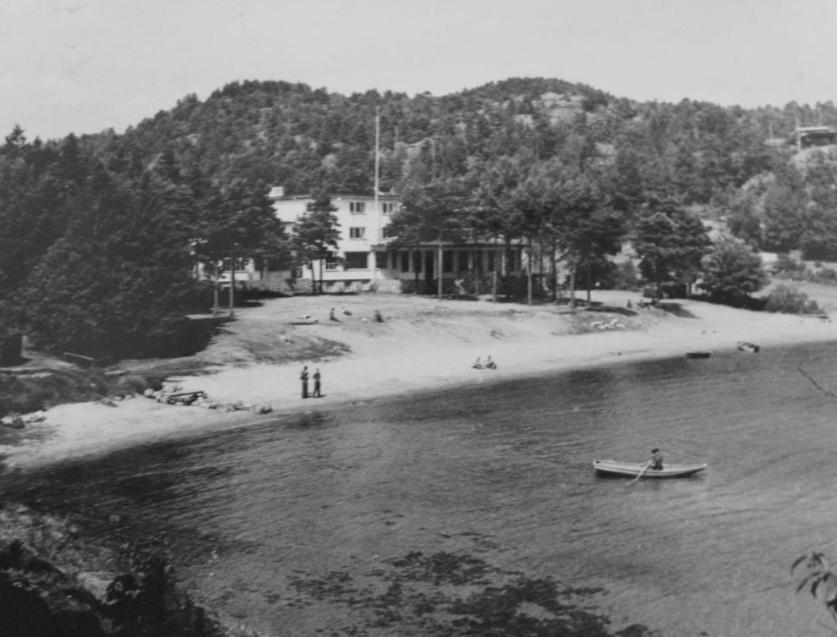
Pegasus Club Beach, Norway. (Paradata/Airborne Assault Museum)
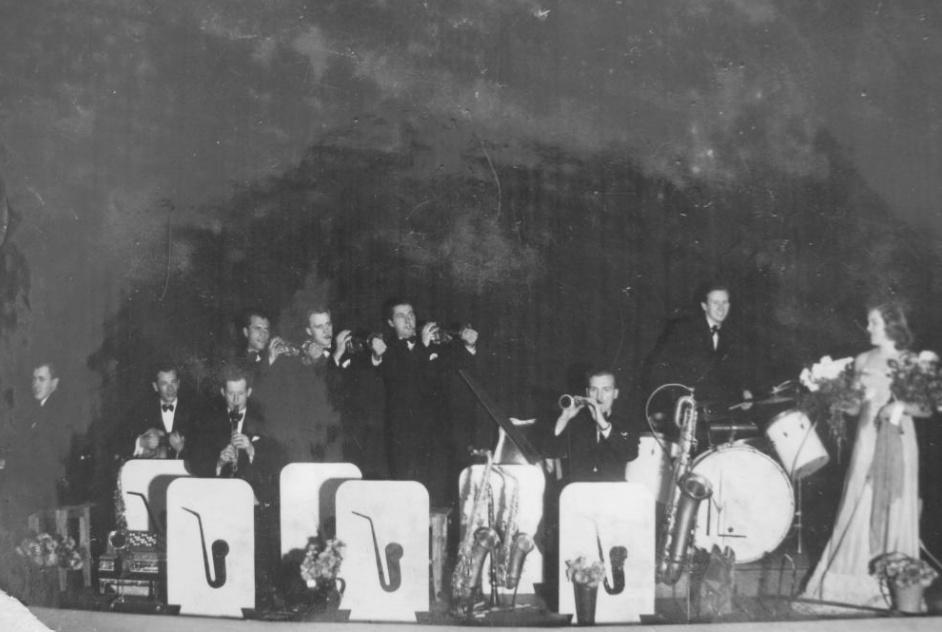
Pegasus Club Dance Band. (Paradata/Airborne Assault Museum)
INTO LEGEND
The 1st Airborne Division and the SAS Brigade returned to England at the end of August 1945 and went on much-deserved leave.
During the war, planners had already been considering the size of Army that the UK would need in the post-war world. They decided that the nation would need a much smaller Army and that there would be a need for only one Airborne Division and no need for the SAS. The SAS would therefore be disbanded and so would one Airborne Division – but which one? Given the amount of time that it would have taken to bring the 1st Airborne Division up to fully trained strength, it was decided to retain the fully trained 6th Airborne Division and disband the 1st Airborne Division.
During the last two months of its existence, the 1st Airborne Division prepared trainees for the 6th Airborne Division and undertook the administrative actions required before its formal disbandment. On 15 November 1945, the 1st Airborne Division was disbanded, passing proudly into the history of the British Army. 19
For more information on Operation ECLIPSE, click here:
- 19
Terence B H Otway, Airborne Forces of the Second World War, 1939-45, Facsimile of War Office publication of 1951 (Uckfield, 2019), 324–329.
BIBLIOGRAPHY
———, Air Movement Tables for Operation DOOMSDAY, 1945
———, Report of the Move of the 1st Airborne Division and Attached Troops to Liberate Norway and Subsequent Action up to 1 June 1945, 1945
1st Parachute Brigade Headquarters, War Diary, May 1945 (The National Archives, WO 171/592)
Barrass, Malcolm B, ‘J R Scarlett-Streatfield_P’, Rafweb.org, 2024 <https://www.rafweb.org/Biographies/Scarlett-Streatfield.htm> [accessed 24 December 2024]
Barrymore Halpenny, Bruce, Action Stations 2: Military Airfields of Lincolnshire and the East Midlands (Wellingborough, 1981)
Dear, Ian, and M R D Foot, The Oxford Companion to the Second World War (Oxford, 1995)
Delve, Ken, Military Airfields of Britain (Ramsbury, 2008)
Freeman, Roger A, UK Airfields of the Ninth Then and Now (1994)
Gregory, Barry, British Airborne Troops, 1940-45 (London, 1974)
Hamlin, John F, Support and Strike! A Concise History of the US Ninth Air Force in Europe (Peterborough, 1991)
Headquarters 1st Airborne Division (A/Q Branch), War Diary, October 1944 (The National Archives, WO 171/395)
Narvik Krigsmuseum/Narvik War Museum, ‘Liberated! A Digital Exhibition by Narvik War Museum’, Narvik Krigsmuseum, 2023 <https://warmuseum.no/exhibition/liberated/#1> [accessed 8 January 2025]
Otway, Terence B H , Airborne Forces of the Second World War, 1939-45, Facsimile of War Office publication of 1951 (Uckfield, 2019), 324–29
Paradata, ‘Norway (Operation Doomsday)’, Www.paradata.org.uk <https://www.paradata.org.uk/event/norway-operation-doomsday> [accessed 2024]
———, ‘Pegasus Club, 1st Airborne Division , Norway’, Paradata.org.uk (2024) <https://www.paradata.org.uk/article/pegasus-club-1st-airborne-division-norway> [accessed 24 December 2024]
The Royal House of Norway, ‘Homecoming, 7 June 1945’, Www.royalcourt.no, 2020 <https://www.royalcourt.no/nyhet.html?tid=183735&sek=27262> [accessed 8 January 2025]
———, ‘World War II’, The Royal House of Norway, 2007 <https://www.royalcourt.no/artikkel.html?tid=28689&sek=27316> [accessed 24 December 2024]
Weeks, John, Airborne Equipment (Newton Abbot, 1976)
Wikipedia Contributors, ‘Milorg’, Wikipedia (2023) <https://en.wikipedia.org/wiki/Milorg> [accessed 24 December 2024]
